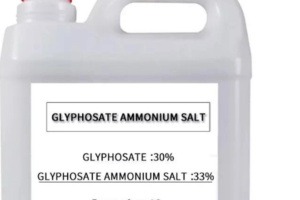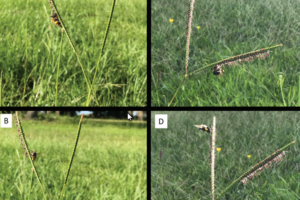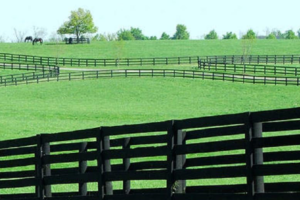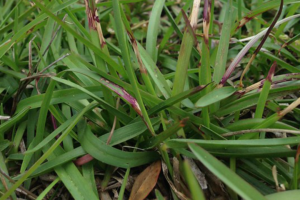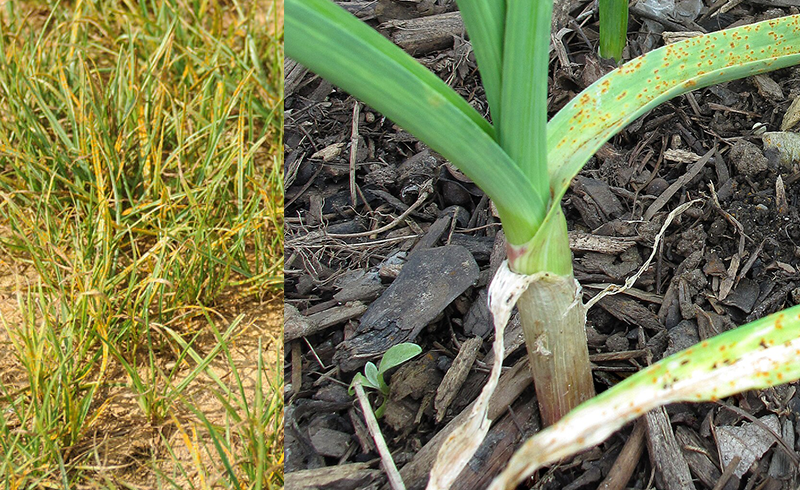
Introduction
The Importance of Zoysiagrass in Landscaping and Sports Fields
Zoysiagrass is a favorite among many gardeners and landscapers and for good reason. This type of grass is known for its lush green appearance and ability to thrive in various conditions, making it a versatile choice for home gardens and professional sports fields. Its dense growth pattern provides a smooth playing surface for sports and adds a touch of elegance to any landscape.
A Brief Overview of Rust Disease and Its Impact on Grass Quality
However, like all plants, Zoysiagrass is not without its challenges. One such challenge is rust disease, a pesky fungal infection that can tarnish the beauty of your lawn. Rust disease manifests as tiny orange or reddish-brown pustules on the grass blades, giving them a ‘rusty’ appearance. If left unchecked, this disease can spread rapidly, affecting the overall health of the grass and diminishing its aesthetic appeal. For gardeners and landscapers, understanding this disease and how to combat it is crucial to maintain a pristine lawn.
Zoysiagrass: A Popular Choice
Characteristics that Make Zoysiagrass Stand Out
Zoysiagrass is often the go-to choice for many garden enthusiasts and professional landscapers. Its popularity stems from its unique characteristics that set it apart from other grass varieties. For starters, Zoysiagrass boasts a dense growth pattern, which means fewer weeds can penetrate and disrupt its lush green carpet.
This dense growth provides a visually appealing lawn and a soft and comfortable surface, ideal for families who enjoy outdoor activities. Its resilience to foot traffic makes it a preferred choice for playgrounds, backyards, and even sports fields.
Adaptability to Different Environments
Another significant advantage of Zoysiagrass is its adaptability. Whether you live in a region with scorching summers or mild winters, Zoysiagrass can thrive with the proper care. It’s drought-tolerant, meaning it can survive and stay green even in prolonged dry spells, reducing the need for frequent watering.
This feature is particularly beneficial for areas with water restrictions or gardeners keen on conserving water. Additionally, Zoysiagrass can grow in various soil types, from sandy to clayey, making it a versatile option for different landscapes. All these attributes contribute to its widespread use in gardens and fields across diverse climatic zones.
Rust Disease: The Silent Turf Damager
Identifying the Telltale Signs of Rust Disease
Rust disease, as the name suggests, manifests as rusty-colored patches on your lawn, turning your beautiful green carpet into a blotchy, unsightly mess. For the untrained eye, it might just seem like your grass is going through a rough patch, but in reality, it’s under attack from this sneaky fungus.
The disease starts as tiny yellow dots on the grass blades, eventually turning into reddish-brown pustules. These pustules rupture, releasing spores that can spread the disease further. If you walk across an infected lawn, you might even notice an orange streak on your shoes, indicating rust disease.
Why Rust Disease is a Concern for Zoysiagrass Owners
While Zoysiagrass is known for its resilience and adaptability, it’s not entirely immune to the threats of rust disease. The disease doesn’t just affect the appearance of your lawn; it can also weaken the grass over time. Infected grass might struggle to perform photosynthesis efficiently, leading to reduced vigor and growth.
For gardeners and landscapers, this means more time, effort, and resources spent reviving the lawn and returning it to its former glory. Moreover, a weakened lawn becomes susceptible to other diseases and pests, creating a cycle of lawn health issues that can be challenging to break.
The Science Behind the Infection
How Rust Disease Attacks Grass
At its core, rust disease is caused by a pesky fungus that sees your lush Zoysiagrass as the perfect host. Once it lands on the grass, this fungus penetrates the grass blades’ outer layers. As it settles in, it feeds on the grass’s nutrients, stealing what it needs to grow strong and healthy. Over time, this leads to forming those characteristic rusty bumps we see on the surface.
But it’s not just about surface damage. Inside, the grass is being weakened, its internal systems disrupted by the invading fungus. It’s like having unwelcome guests in your home who eat all your food and make a mess everywhere they go.
The Grass’s Natural Defense Mechanisms
In its wisdom, nature has equipped plants, including Zoysiagrass, with ways to defend themselves against threats. When the grass detects the presence of rust fungus, it tries to mount a defense. It might try to produce chemicals to fend off the invader or alter its internal processes to limit the damage. Think of it as the grass’s immune response, similar to how our bodies fight off infections.
However, just like with human illnesses, sometimes the grass’s natural defenses aren’t enough, especially if the infection is widespread or the grass is already stressed due to other factors like drought or poor soil nutrition. Understanding the science can help gardeners and landscapers intervene more effectively.
Genetic Responses of Zoysiagrass to Rust
The Grass’s Internal Alarm System
Every plant, including our beloved Zoysiagrass, has its built-in alarm system at the genetic level. When rust disease starts its invasion, the grass’s genes “sense” this threat and begin to react. It’s like when our body’s temperature rises when we get sick.
This genetic response is the grass’s way of signaling that something’s wrong and trying to activate its defense mechanisms. By understanding this internal alarm system, researchers hope to find ways to make Zoysiagrass even more resilient against rust and other diseases.
Tapping into the Grass’s Genetic Blueprint
The genetic makeup of a plant, its DNA, is like a detailed instruction manual on how it grows, reacts, and survives. When Zoysiagrass faces rust disease, certain parts of this manual or specific genes get activated to combat the threat. Scientists are trying to read and understand these specific sections of the grass’s genetic manual in their studies.
By doing so, they aim to determine which genes play a crucial role in defending against rust. For gardeners and landscapers, this knowledge is invaluable. It means that in the future, we might have varieties of Zoysiagrass that are genetically tailored to be super resistant to rust, saving us time, money and ensuring our lawns stay green and healthy.
Practical Tips for Gardeners
Spotting the Early Signs of Rust
Identifying rust disease early on for gardeners can make a world of difference. Rust typically starts as small, yellowish-orange spots on the grass blades. Over time, these spots can grow larger and turn a rusty brown color, hence the name. If you notice these signs, it’s essential to act quickly.
The sooner you address the issue, the better your lawn’s chances to recover and thrive. Regularly inspecting your lawn, especially during the wetter months when rust is more prevalent, can help you catch and address the problem early on.
Effective Treatment and Prevention While the science behind rust disease is complex, the solutions for gardeners are straightforward. First, please make sure your lawn is well-aerated. This means ensuring the soil isn’t too compacted, allowing for better airflow and reducing the damp conditions that rust loves.
Secondly, consider using fungicides that are specifically designed to treat rust. These can be found at most gardening stores. However, always follow the label instructions carefully and consult a local gardening expert if unsure. Lastly, regular mowing and avoiding excessive watering can help keep rust at bay. Remember, a well-maintained lawn is often the best defense against any disease.
Future of Zoysiagrass: Building Resistance
Breeding for Better Grass
The future looks promising for Zoysiagrass, especially with the advancements in understanding its genetic responses to diseases like rust. Scientists are continuously working on breeding and developing new varieties of Zoysiagrass that are more resistant to rust and other common diseases.
For gardeners and landscapers, this means that in the coming years, we might have access to Zoysiagrass varieties that are even tougher and more resilient than the ones we have today. These new breeds would look lush and green and stand firm against the pesky rust disease, reducing the need for constant care and attention.
The Role of Modern Research
Modern research, especially studies like the one we discussed, plays a pivotal role in shaping the future of gardening and landscaping. By diving deep into the genetic makeup of plants and understanding how they react to threats, scientists can devise strategies to enhance their natural defenses.
For the average gardener, this translates to healthier lawns with less effort. It’s an exciting time for those in the gardening world, as these research findings mean that the plants and grasses of tomorrow will be better equipped to handle challenges, ensuring that our gardens remain a source of pride and joy.
FAQ’S
What is Zoysiagrass, and why is it popular?
Zoysiagrass is a warm-season turfgrass known for its lush appearance and resilience. It’s a favorite among gardeners and landscapers due to its ability to thrive in various conditions and its resistance to many pests and diseases.
What is rust disease in grasses?
Rust disease is a fungal infection that affects grasses, leading to unsightly brown patches and weakening the turf. It’s named for the rust-like appearance it gives to the grass blades.
How does rust disease affect Zoysiagrass?
Rust disease can cause Zoysiagrass to lose its vibrant green color, leading to brown patches. This affects the lawn’s appearance and can weaken the grass, making it more susceptible to other issues.
What did the study reveal about Zoysiagrass’s response to rust?
The study delved deep into the genetic responses of Zoysiagrass when infected with rust. The grass activates specific genes to combat the infection, showcasing its natural defense mechanisms.
How can gardeners protect their Zoysiagrass from rust?
Regular monitoring, proper watering, and good air circulation can help prevent rust. If rust appears, fungicides and rust-resistant Zoysiagrass varieties can be considered.
Are there rust-resistant varieties of Zoysiagrass?
With ongoing research, scientists are working on breeding and developing new Zoysiagrass varieties that are more resistant to rust and other diseases.
How does modern research benefit gardeners and landscapers?
Modern research helps in understanding plant genetics and their responses to threats. This knowledge aids in developing more robust and more resilient plant varieties, ensuring healthier gardens with less effort.
What’s the future of Zoysiagrass in terms of disease resistance?
The future is promising. With continuous research, we can expect Zoysiagrass varieties that are more resistant to diseases like rust and require less maintenance, making gardening more accessible and enjoyable.
Conclusion
Reflecting on Zoysiagrass Resilience
Zoysiagrass has long been a favorite for many gardeners and landscapers, not just for its aesthetic appeal but also for its hardiness. The ability of this grass to stand tall against various challenges, from harsh weather conditions to pesky diseases, is commendable. The recent study on its genetic response to rust disease only adds another feather to its cap. It’s fascinating to realize that beneath the green blades we see, there’s a complex system at work, fighting off invaders and ensuring the grass remains lush and green.
For the everyday gardener, this means that when you choose Zoysiagrass, you’re not just selecting a grass type but a resilient partner for your lawn. Its natural defense mechanisms, combined with a bit of care from your side, can ensure a lawn that remains the envy of your neighbors.
The Future of Gardening with Zoysiagrass
As we move forward, the gardening world can expect even more advancements. The research on Zoysiagrass is a testament to the wonders of modern science and how it can aid in improving our gardens. With the knowledge we now have and the continuous efforts of researchers, the future holds the promise of even more robust Zoysiagrass varieties. These varieties would resist diseases better and offer other benefits, such as reduced water needs or enhanced growth rates.
For gardeners and landscapers, this means a future where maintaining a beautiful lawn becomes more straightforward and sustainable. It’s a future where we can enjoy the beauty of our gardens, knowing that the plants we’ve chosen are equipped to handle the challenges they face.
Citation:
Zhang, Di, Tang, Jun, Wei, Kai, Jia, Shangang, Jiang, Yiwei, Cai, Hongwei, u. a. (2022): Physiological and Molecular Responses of Zoysia japonica to Rust Infection.International Journal of Molecular Sciences,23 (8), S. 4185 Online verfügbar unter: URL: https://dx.doi.org/10.3390/ijms23084185

Bob Green, a passionate lawn care enthusiast with over two decades of landscaping experience, is this website’s proud owner. His vast knowledge of horticulture and dedication to helping homeowners maintain beautiful lawns are reflected in the valuable content he shares on his platform. John has always been interested in Agrostology.









